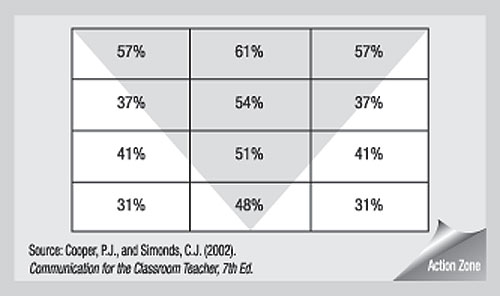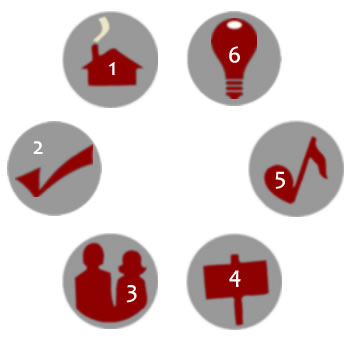 Function III: Social Contact
Function III: Social Contact
Classroom Setting Strategies Nos. 15 through 17
- No. 15: Arrange the room to suit the amount of student interaction desired.
- No. 16: Arrange the room for easy access to all students.
- No. 17: Create a large action zone.
Classroom Setting Strategy No. 15: Arrange the room to suit the amount of student interaction desired.
The seating arrangement in a classroom influences both the amount and nature of interactions among students and between students and the teacher. For example, arranging desks in clusters encourages students to talk to one another, while arranging desks in rows discourages discussion among students.
Classroom Setting Strategy No. 16: Arrange the room for easy access to all students.
Having easy access to all students allows you to monitor and respond to many types of classroom management issues, including giving encouragement and support to struggling students, monitoring students to make sure they stay on task, and intervening in confrontations among students. Close proximity and direct eye contact are powerful nonverbal cues that are delivered most effectively when you have easy access to all students.
Classroom Setting Strategy No. 17: Create a large action zone.
The "action zone" is the area of the classroom in which the teacher most successfully engages students in learning. It is defined in terms of proximity to the teacher. Students who sit in the action zone often participate more, have more positive attitudes, and achieve more than students who sit at the periphery of the classroom. Moving throughout the room as you teach varies the location of the action zone, maximizing the number of students who are engaged in learning.
Students' Participation According to Seating (the action zone is shaded):

According to Cooper and Simonds (2003), students who sit in the action zone often participate more, have more positive attitudes, and achieve more than students who sit at the periphery of the classroom. Simply by moving around the room, you can move the action zone to increase your proximity to students and include them in the action zone. You don’t have to move students; you just have to move yourself.
Strategies by Function
Click the images or text links below to navigate to the rest of the strategies

